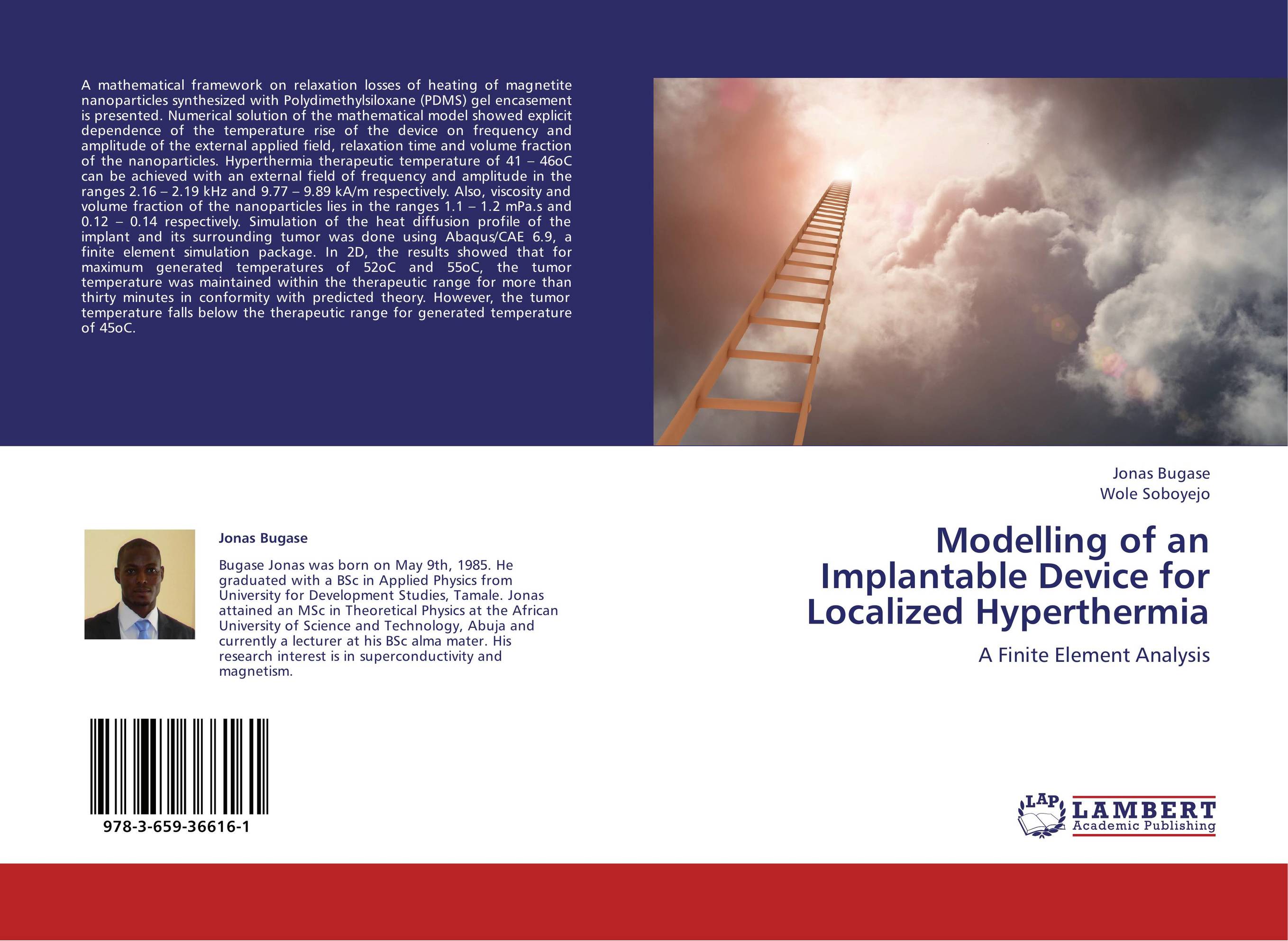| Поиск по каталогу |
|
(строгое соответствие)
|
- Профессиональная
- Научно-популярная
- Художественная
- Публицистика
- Детская
- Искусство
- Хобби, семья, дом
- Спорт
- Путеводители
- Блокноты, тетради, открытки
Modelling of an Implantable Device for Localized Hyperthermia. A Finite Element Analysis

В наличии
| Местонахождение: Алматы | Состояние экземпляра: новый |

Бумажная
версия
версия
Автор: Jonas Bugase and Wole Soboyejo
ISBN: 9783659366161
Год издания: 2013
Формат книги: 60×90/16 (145×215 мм)
Количество страниц: 76
Издательство: LAP LAMBERT Academic Publishing
Цена: 25550 тг
Положить в корзину
| Способы доставки в город Алматы * комплектация (срок до отгрузки) не более 2 рабочих дней |
| Самовывоз из города Алматы (пункты самовывоза партнёра CDEK) |
| Курьерская доставка CDEK из города Москва |
| Доставка Почтой России из города Москва |
Аннотация: A mathematical framework on relaxation losses of heating of magnetite nanoparticles synthesized with Polydimethylsiloxane (PDMS) gel encasement is presented. Numerical solution of the mathematical model showed explicit dependence of the temperature rise of the device on frequency and amplitude of the external applied field, relaxation time and volume fraction of the nanoparticles. Hyperthermia therapeutic temperature of 41 – 46oC can be achieved with an external field of frequency and amplitude in the ranges 2.16 – 2.19 kHz and 9.77 – 9.89 kA/m respectively. Also, viscosity and volume fraction of the nanoparticles lies in the ranges 1.1 – 1.2 mPa.s and 0.12 – 0.14 respectively. Simulation of the heat diffusion profile of the implant and its surrounding tumor was done using Abaqus/CAE 6.9, a finite element simulation package. In 2D, the results showed that for maximum generated temperatures of 52oC and 55oC, the tumor temperature was maintained within the therapeutic range for more than thirty minutes in conformity with predicted theory. However, the tumor temperature falls below the therapeutic range for generated temperature of 45oC.
Ключевые слова: modelling, hyperthermia, Finite Element Simulation



